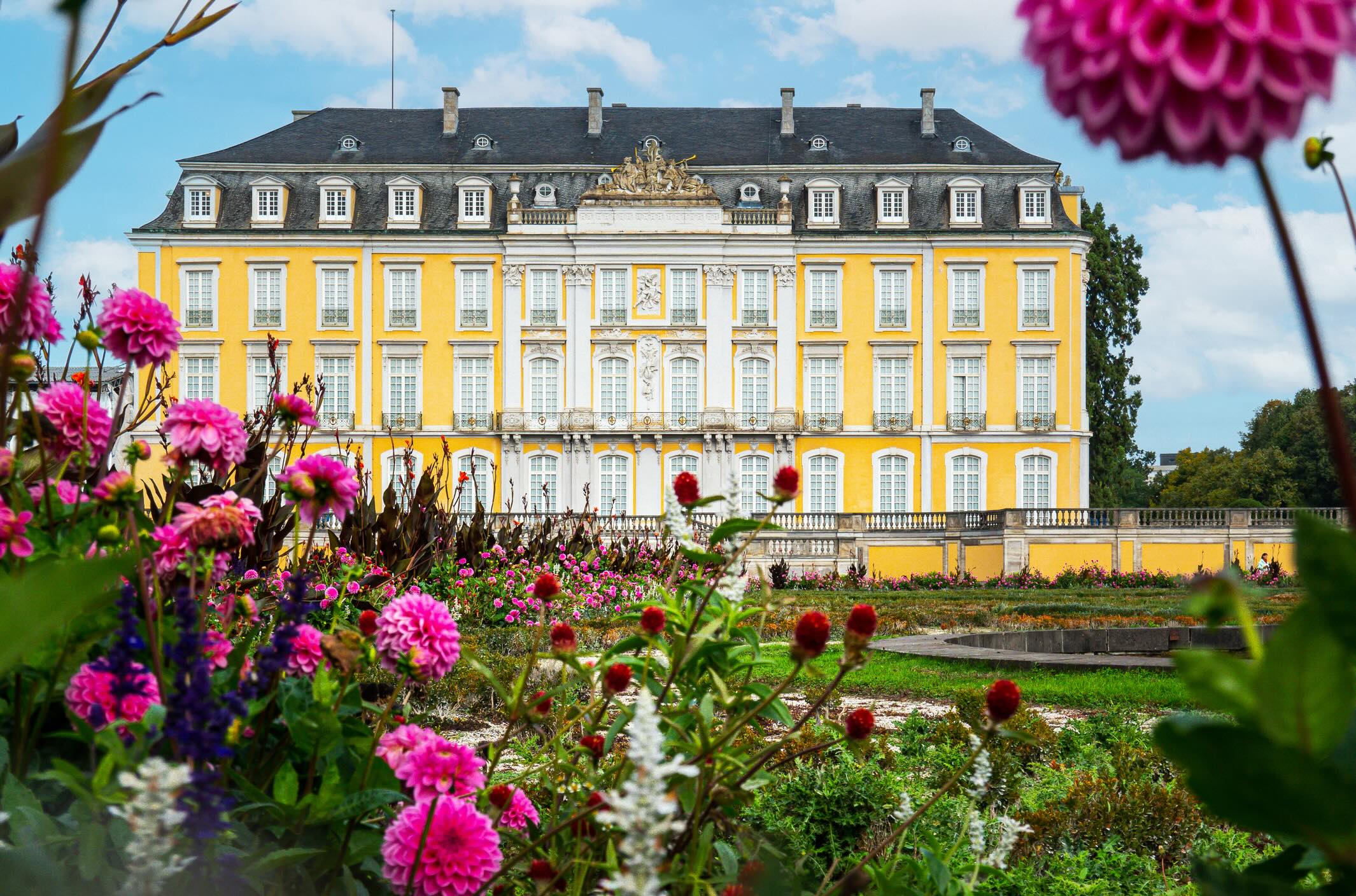I raise my baton to alert the orchestra that I am ready to conduct. In my best Yannick Nézet-Séguin imposture, I cue the violins, then coax in the woodwinds and the brass. I punctuate my air-piercing baton swirling, with a jab toward the timpani to elicit an emphatic beat. Smug and sly, I think that Felix Mendelssohn’s Italian Symphony never sounded so expressive. As if following my intensity, the surrounding chamber becomes enveloped in a saturated vermillion glow that melts into an intense violet, as I command the orchestra, sprinting to the end of the first movement.
Alas, I am conducting nary a human, but rather a dozen or so electronic totems, synced to the digital leger-de-main that is the underpinning of Leipzig’s Mendelssohn House Effektorium, a room for making virtual music. This is 21st-century, sophisticated child’s play: A dozen or so monolithic speakers (labeled appropriately, first violins, double basses, French horns, and so on), populate this symphony hall. You take your position at the lectern and then follow the snaking red-line guide along the score; press the touchscreen, wield the baton to change tempo and tone, and suddenly you and your crop are Bernstein, Mehta, or, well, Mendelssohn.

One room in the exhibition dedicated to composer Fanny Mendelssohn helps visitors imagine her Berlin study. Photo courtesy of Mendelssohn House
The meticulously restored Mendelssohn House in Leipzig is where the maestro lived from 1845 until his death two years later; he was the Kapellmeister of the city’s renowned Gewandhaus Orchestra from 1935 to 1847. The museum opened in 1997 and is a major draw here, in a city legendary for its musical history. This charming municipality represents, though, merely one reason to visit the northeastern federal state of Saxony, in Germany.
Spread over 18,400 square kilometres, and bordered snugly by the Czech Republic, Poland, and to the south, Bavaria, the region is one of the smallest of the 16 federal states comprising Germany. But Saxony, with its plethora of UNESCO World Heritage spots, is enviably bursting with compelling sites – and sights. And, with Leipzig hosting four of the UEFA Euro 2024 soccer games, it’s going global. Games aside, here, my shortlist of things to do and see in this remarkable region of Germany.
1. MUSIC
More music…The Leipzig Music Trail is 5 kilometres long and heralds Telemann, Bach, Schumann, Wagner, Grieg, Janáček, and Mahler, among the many notable composers who worked or lived here. Stainless steel swirls – think the Nike swoosh on steroids – mark the spots in the cobbled pavement where you can stop, listen to recordings and read about musical history. Do not pass up a performance at the legendary, glass-facade Gewandhaus. (And, also be sure to visit the Holocaust Memorial, consisting of 140 empty bronze chairs – representing the 14,000 Jews who perished – erected on the site where the Grand Synagogue once stood.)

Gewandhaus, Augustusplatz, Leipzig, Germany. Photo by Dirk Pohlers on Unsplash
2. FILMS
Leave music behind and enter the razzle-dazzle of Hollywood, when you visit the cinematic epicentre of Eastern Europe – Görliwood, the easternmost city in Germany, properly known as Görlitz. Countless films, including Inglourious Basterds, The Reader, The Book Thief, and The Grand Budapest Hotel, among the many, were all filmed here. For architecture buffs, this town is also home to more than 4,000 listed buildings and is considered Germany’s largest heritage area. Some religious sites: The Holy Sepulchre is the most faithful copy of the Jerusalem site. Amazingly, the Art Nouveau-styled Görlitz synagogue, built at the beginning of the 20th century, survived Kristallnacht. With no congregation to tend to it, however, it fell into tragic disrepair. After a 10-million-Euro restoration, the synagogue reopened; on August 20, 2021, the first service in 80 years was held.
3. CHRISTMAS MARKET
Yes, the German Christmas markets are among the most celebrated in the world, but it is the village of Seiffen that takes the award for blindingly festive, year-round Noel. This holiday-themed town in the Ore Mountains was once a centre for silver- and tin-mining, but as supplies of those metals declined, residents turned to wood-carving and -turning. Dozens of shops sell traditional ornaments, including the ever-popular nutcracker, first created in the 17th century in Germany. (There is even a nutcracker museum – Erstes Nussknacker Museum – in Ergzebirge.) There are workshops where you can watch the master woodworkers spin their magic or create your own ornaments. A must in Seiffen: The traditional Neinerlaa Christmas Eve dinner, with its elaborate, sculpted platter featuring, among the nine obligatory foods, bratwurst, dumplings and sauerkraut.
4. ARCHITECTURE

Bruhl, Germany: The Baroque Augustusburg Castle, one of the first important creations of Rococo in Bruhl near Bonn, North Rhine Westphalia – Germany. World Heritage Site. PHOTO by Paola Leone
Chemnitz is the third-largest city in Saxony and it too offers many sights. The Villa Esche, built by Belgian architect Henry van de Velde, was the home of the Herbert Esche family, and features a stunning meld of Belle Epoque and Art Nouveau styles, well worth swooning over. I could have spent all day in the Saxon Museum of Industry, located in a former foundry. It brings machines and man together in unexpected ways, whether exploring vehicles or textiles. Around Chemnitz are three castles worth visiting, the Lichtenwalde Castle and Gardens, the Scharfenstein Castle, and the Augustusburg Castle, where I spent several hours in the motorcycle museum. Spanning more than 120 years of motorcycling history, the exhibits range from funky bicycles to exquisite, burnished-to-perfection Harley-Davidsons.
5. HISTORY
No mention of Saxony is complete without an in-depth stay in charming, history-filled Dresden, including a lengthy visit to the world-renowned Green Vault, or Grünes Gewölbe, comprising the Historic Green Vault (dripping in sumptuous ormolu and splendor) and the New Green Vault (with more traditional collections). Combined, here is one of the grandest collections of decorative arts, simply put, in all of Europe. Founded by Augustus the Strong in 1723, its exhibits include everything, ranging from Baroque to Classicism.







